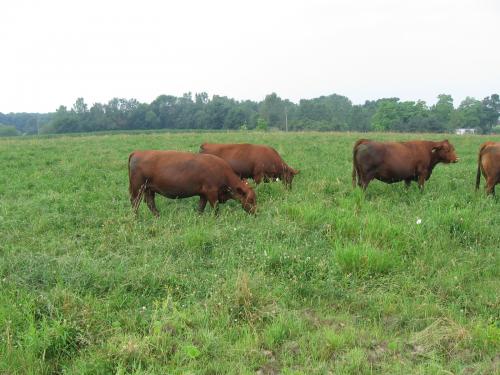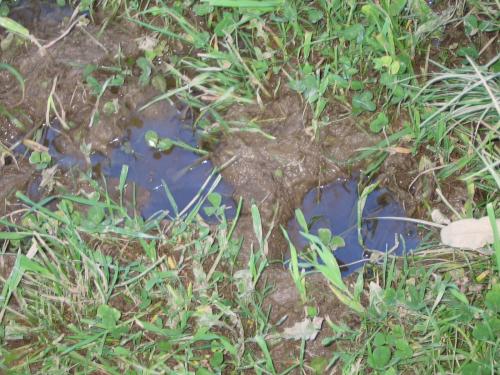Spring green-up is like heaven for grazers - pasture conditions trump the calendar
Spring grazing schedule is behind normal for 2013 due to low temperatures

Rotational Grazing. Photo by Kevin Gould, Allegan, Mich., 2012
Spring pasture conditions are well behind normal for 2013. With temperatures averaging over 3-4 degrees below normal so far in April, our pastures are behind schedule for spring green-up. This means we need to be watching the forage heights and not the calendar to determine the proper timing to begin grazing.
Average plant height should be approximately 8 inches on average and animals should be move about twice as fast in the spring to get across all the paddocks in three weeks or less. Pasture growth may also be stunted this year due to overgrazing in many areas last fall. At the time, many producers were coming off significant summer drought and may have extended the grazing season which may have further suppressed spring 2013 growth.

Hoof damage on wet paddocks. Photo by Kevin Gould, Ionia, Mich., 2012
Another point to consider is the extremely wet conditions caused by record rainfall in many locations of Michigan. Michigan State University Extension recommends that producers be prepared to hold cattle for an additional 7-10 days in winter drylot and evaluate pasture moisture to prevent hoof damage to new plant growth. Plan to graze the paddocks, but first allow wet higher well drained paddocks and riparian areas to dry out.
Additional cattle management resources are available on the Michigan State University Beef Team website.



 Print
Print Email
Email
